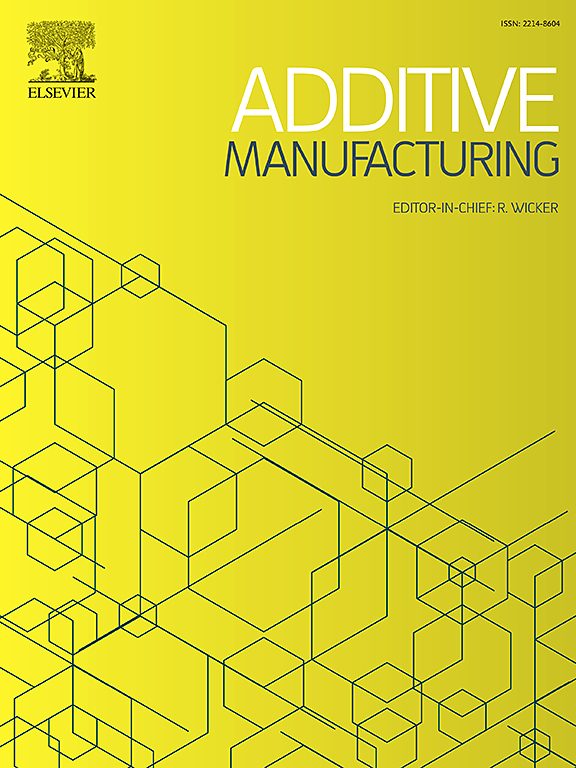Spatial green density variation and its effect on distortion prediction in binder jet additive manufacturing
IF 10.3
1区 工程技术
Q1 ENGINEERING, MANUFACTURING
引用次数: 0
Abstract
Binder Jet Additive Manufacturing (BJAM) often encounters significant geometric distortions with part shrinking by over 15 %. Advanced compensation models have been developed to mitigate these distortions, reducing final deviations to within 2–3 % of target dimensions. A critical factor in these models is the green density of the printed part, which varies based on printing parameters and part location within the build. This study delves into the three-dimensional spatial variation of green density in BJAM, examining two prevalent powder spreading mechanisms: a fixed powder feedstock container with a vertically movable platform and cylindrical roller spreader, and a horizontally moving hopper for powder deposition. Experiments were conducted on three directionally scaled samples to assess the influence of geometric size on green density distribution. Analysis reveals at least 5 % green density variations across different vertical positions ('part layers'), particularly in systems with extensive spreading distances due to the powder spreading and compaction process. Additionally, density discrepancies exceeding 10 % were observed within parts of the same build in larger printing systems, underscoring the impact of spatial variation on the final properties of the manufactured parts. Incorporating spatial green density variations into finite element sintering models dramatically enhances prediction accuracy, reducing errors to within 1 % (approximately 0.5 mm) of experimental results, representing a 75 % improvement over uniform density assumption. This research highlights the necessity of accounting for spatial green density variations to achieve precise control over the final geometry of BJAM parts.
求助全文
约1分钟内获得全文
求助全文
来源期刊

Additive manufacturing
Materials Science-General Materials Science
CiteScore
19.80
自引率
12.70%
发文量
648
审稿时长
35 days
期刊介绍:
Additive Manufacturing stands as a peer-reviewed journal dedicated to delivering high-quality research papers and reviews in the field of additive manufacturing, serving both academia and industry leaders. The journal's objective is to recognize the innovative essence of additive manufacturing and its diverse applications, providing a comprehensive overview of current developments and future prospects.
The transformative potential of additive manufacturing technologies in product design and manufacturing is poised to disrupt traditional approaches. In response to this paradigm shift, a distinctive and comprehensive publication outlet was essential. Additive Manufacturing fulfills this need, offering a platform for engineers, materials scientists, and practitioners across academia and various industries to document and share innovations in these evolving technologies.
 求助内容:
求助内容: 应助结果提醒方式:
应助结果提醒方式:


